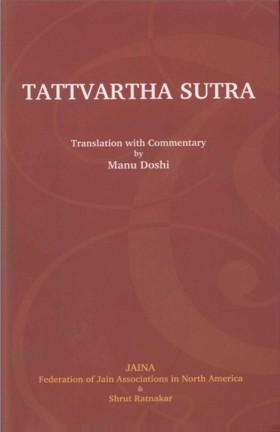02.23 Vāyvantānamekam
Audio: Sanskrit: वाय्वन्तानामेकम् ।
Hindi: वायुकाय तक के जीवों के एक इन्द्रिय होती है ।
02.24 Krmipipilikābh ramarman ushyād ināmekaikavrud-dhāni
Audio: Sanskrit: कृमि-पिपीलिका-भ्रमरमनुष्यादीनामेकैकवृद्धानि ।
Hindi: कृमि(कीड़ा-लट), चींटी, भ्रमर, मनुष्य में क्रम से एक एक इन्द्रिय अधिक होती है ।
02.25 Sanjninah Samanaskāh
Audio: Sanskrit: संज्ञिन: समनस्का:।
Hindi: संज्ञी मन वाले होते है ।
02.23-25
English: Those up to gaseous state are one-sensed beings, those like earth worms, ants, bees and humans have increasingly one additional sense; those with mind are intellectual beings. Depending upon the number of sense organs, living beings are divided in the following five categories.
There are five types of one-sensed beings. Shells, corals, etc. are earthly beings; snow, hail, waves etc. are aqueous beings; fire, lamp, lightening etc. are lustrous beings; wind, tornado etc. are gaseous beings; trees, plants, bushes etc. are vegetable beings. All of them have only the sense of touch.
Earth worms, leaches etc. have the sense of touch as well as of taste and are therefore termed as two-sensed beings.
Ants, bugs etc. have the senses of touch, taste as well as odor and are therefore termed as three-sensed beings.
Flies, bees, mosquitoes etc. have the senses of touch, taste, odor as well as sight and are therefore termed as four-sensed beings.
All other living beings, including birds, beasts, humans, heavenly and infernal beings, have five senses and are therefore termed as five-sensed beings. Most of them also have the mental capability, which is an intangible sense.
 Acharya Umaswati
Acharya Umaswati
